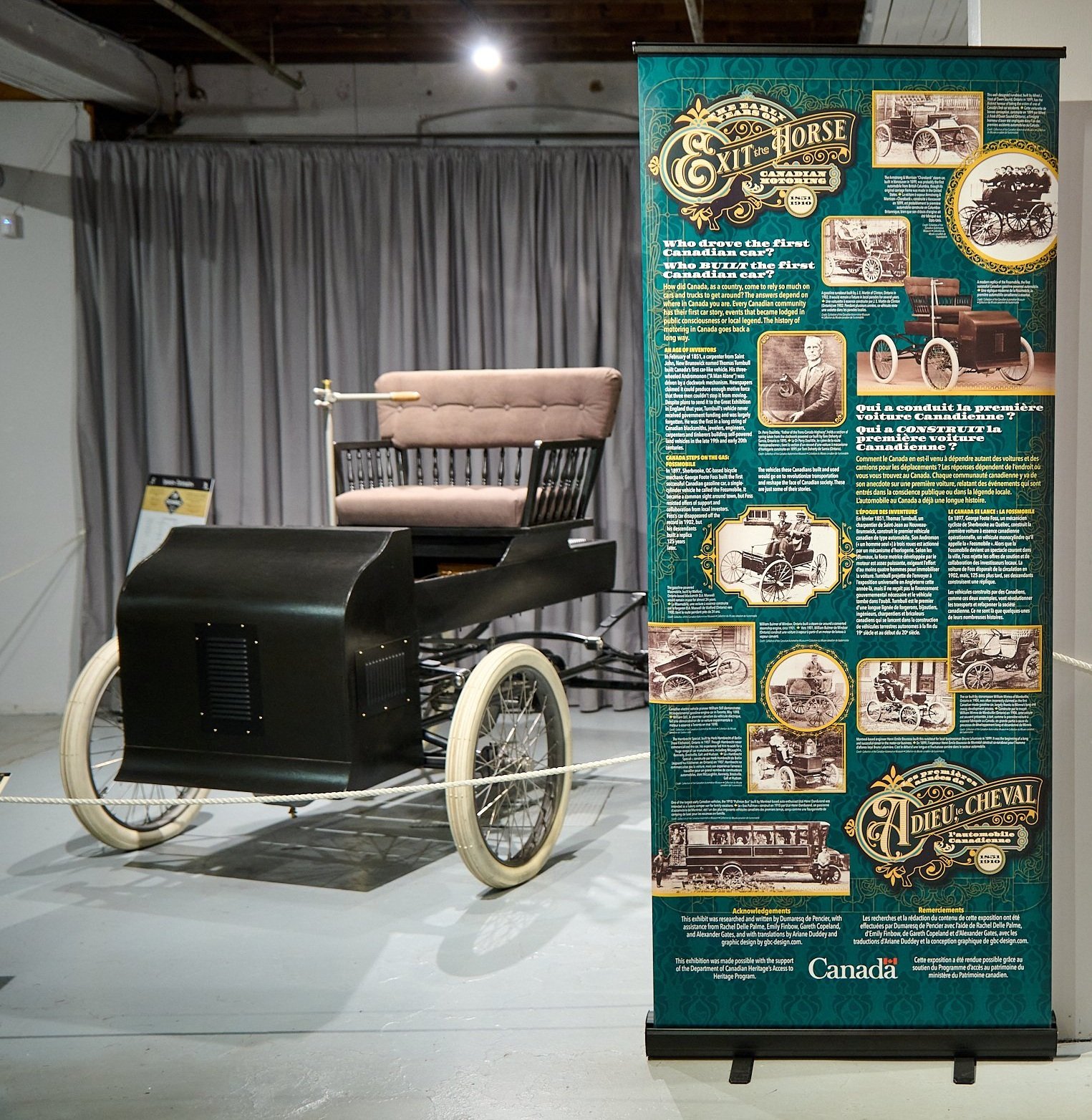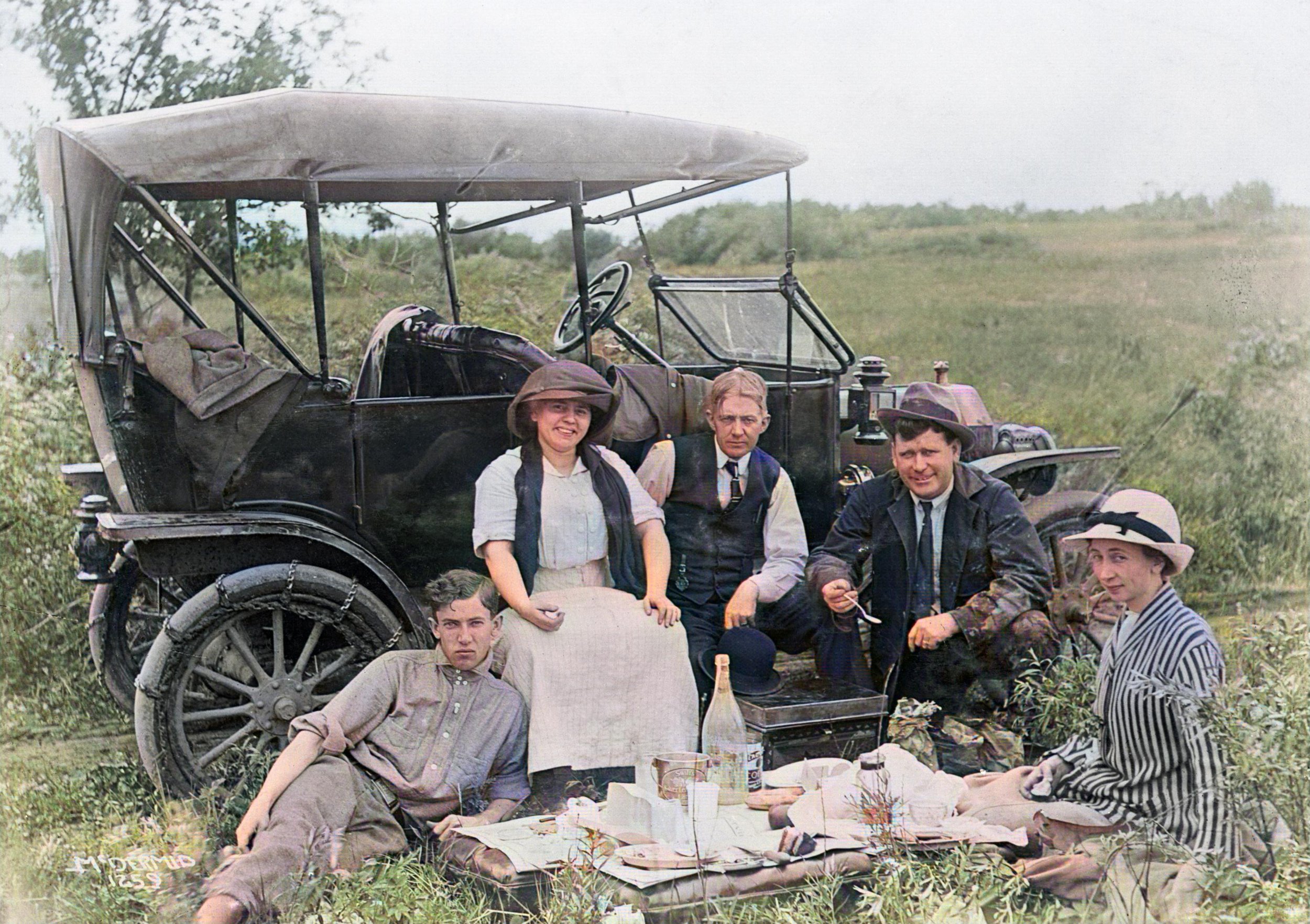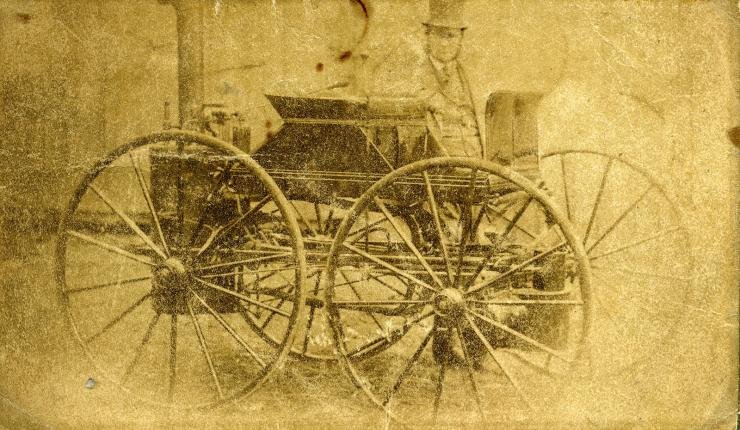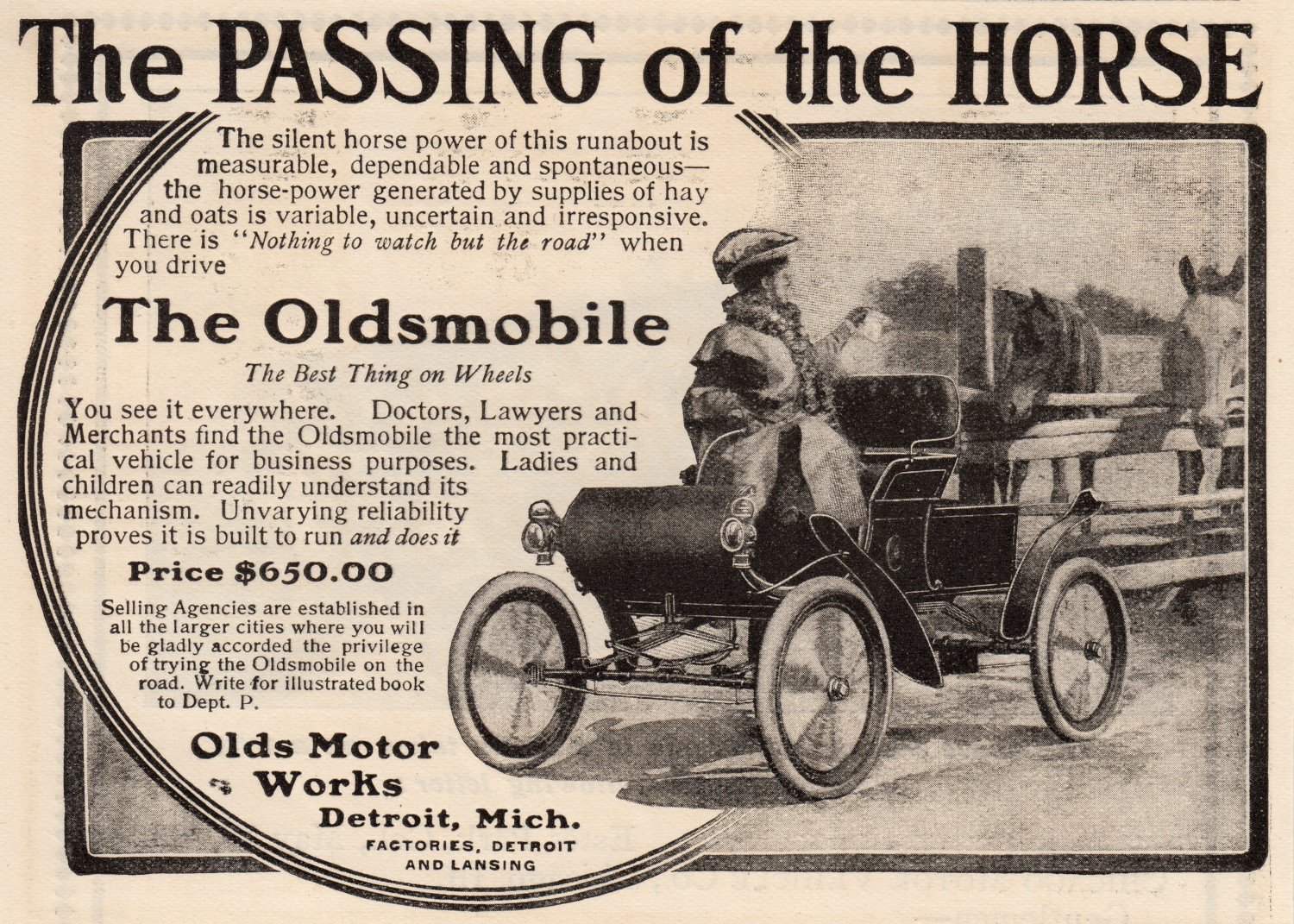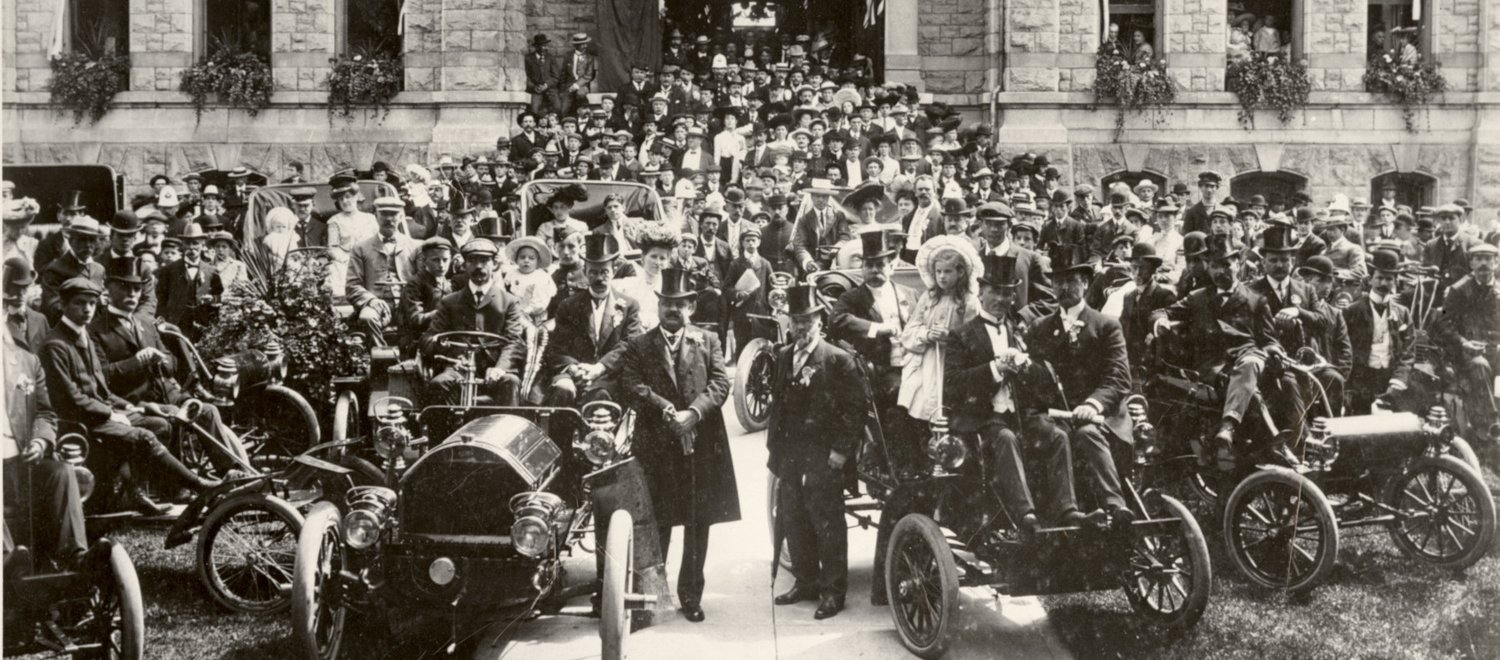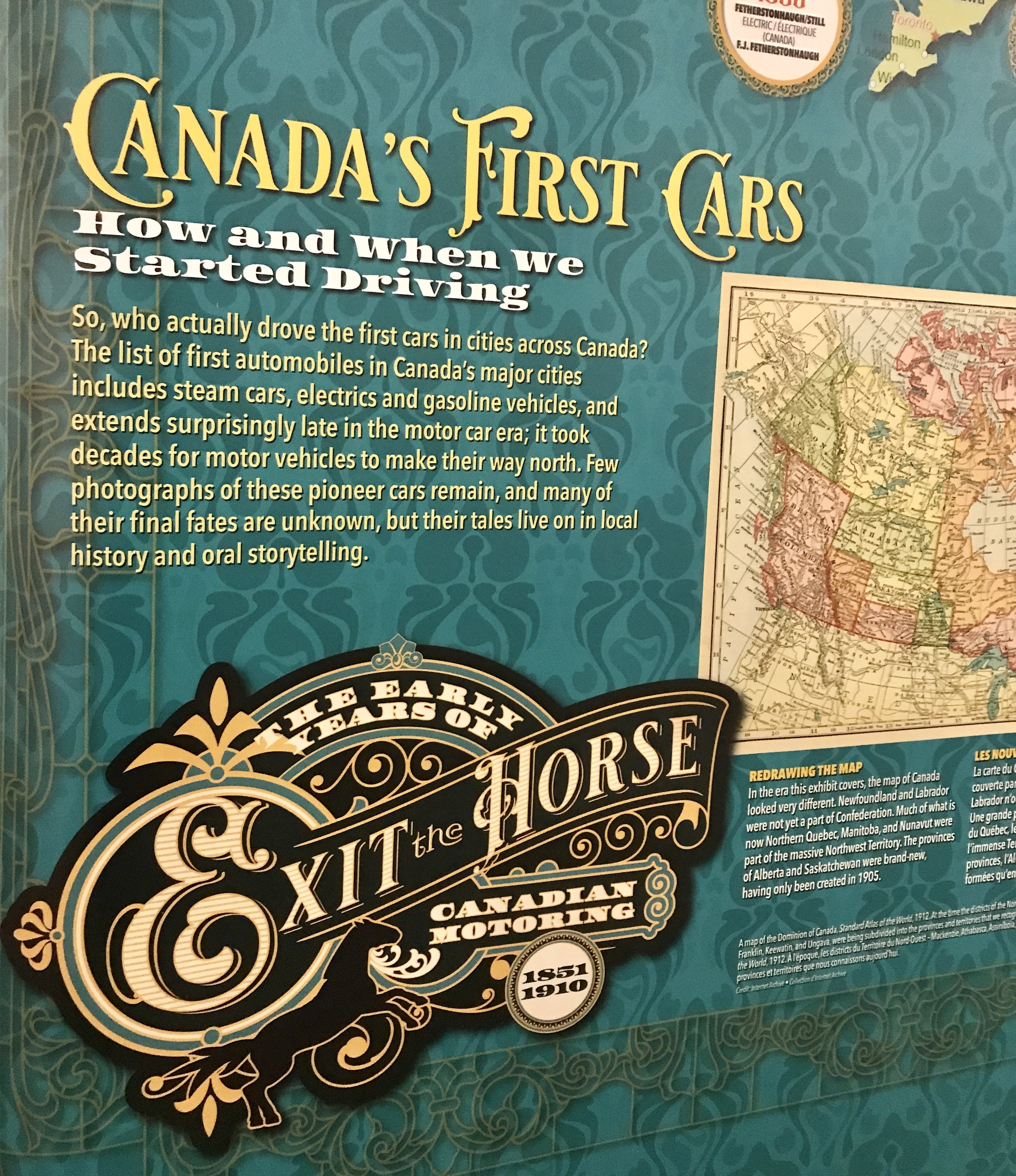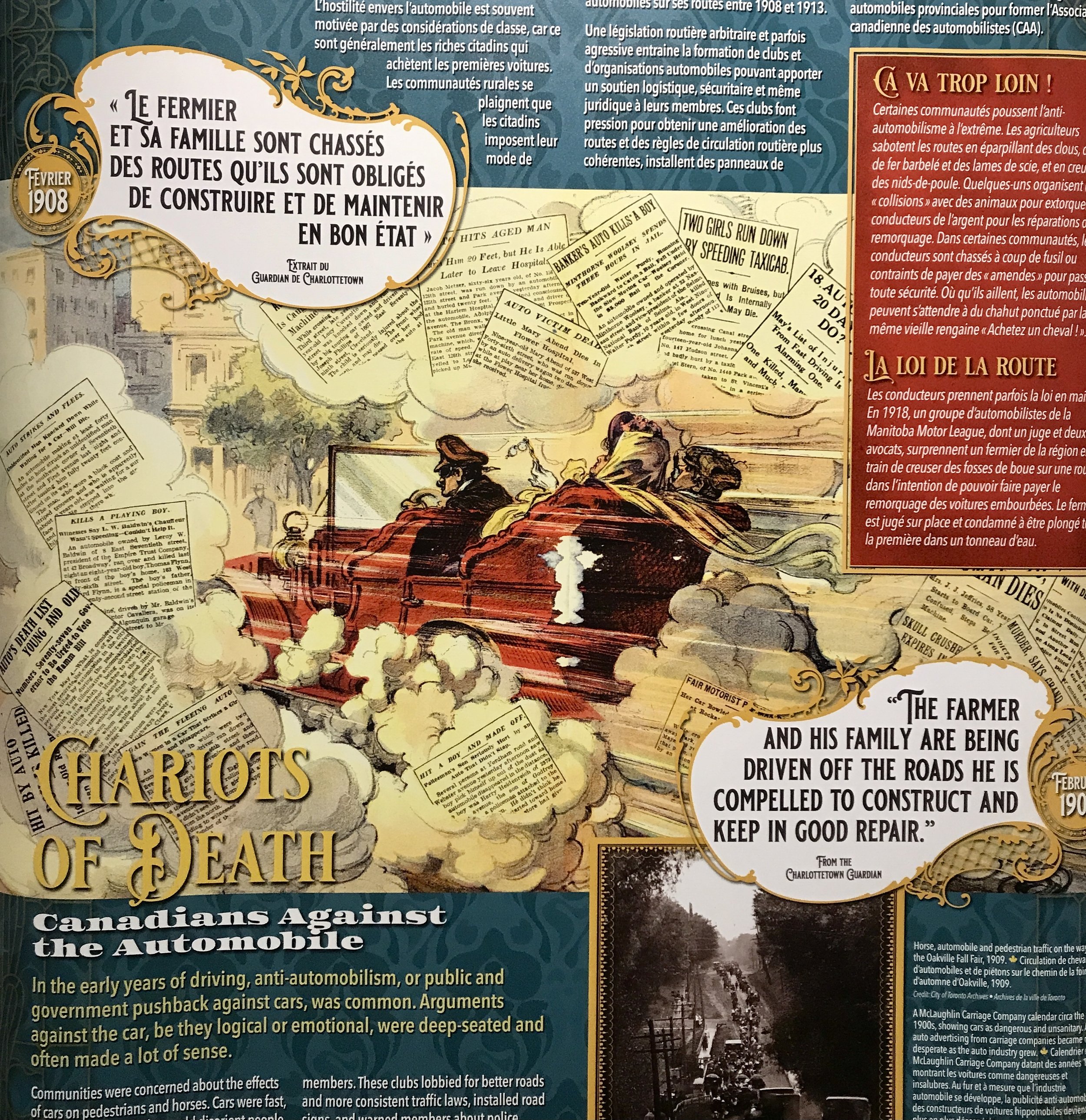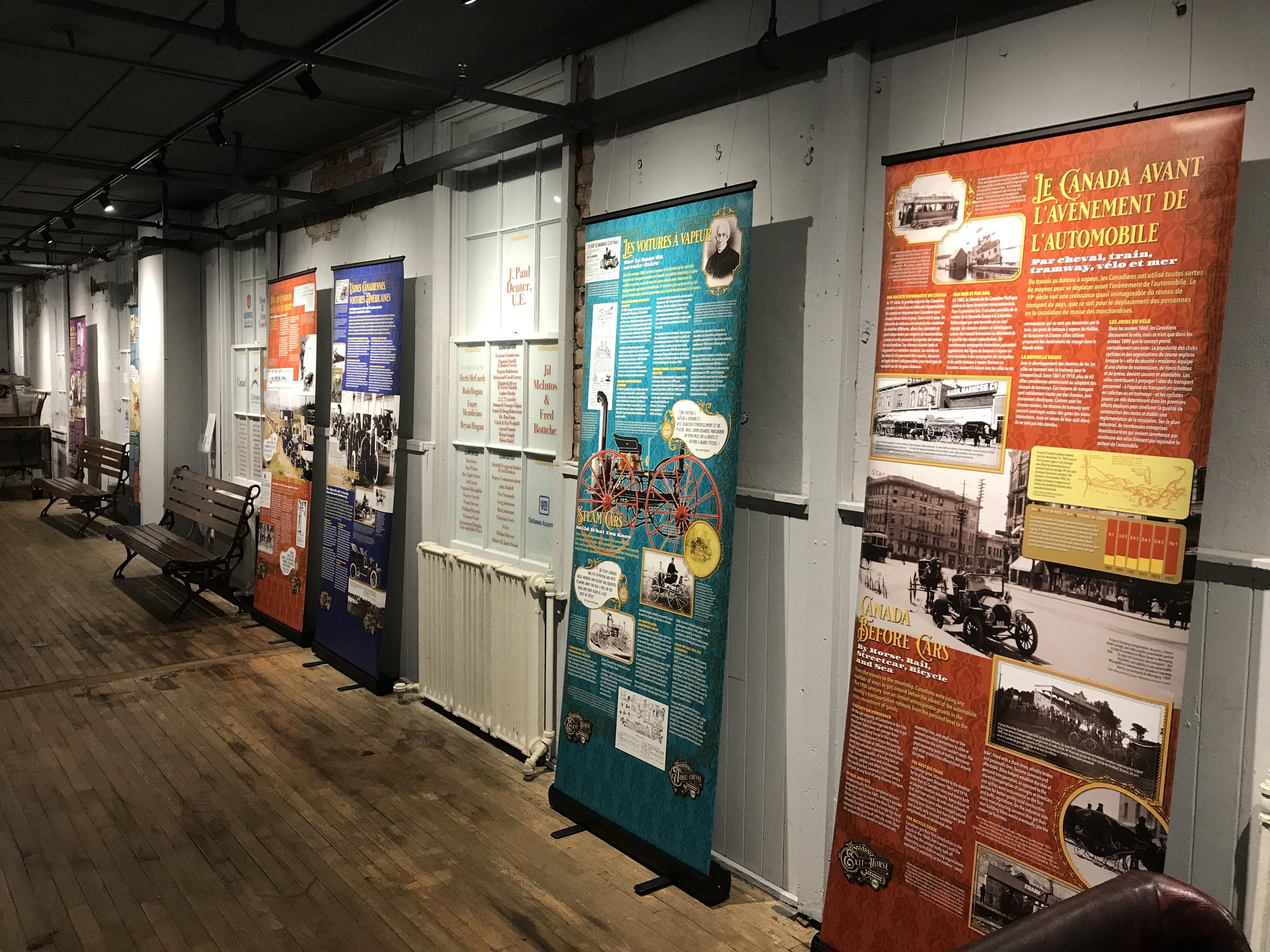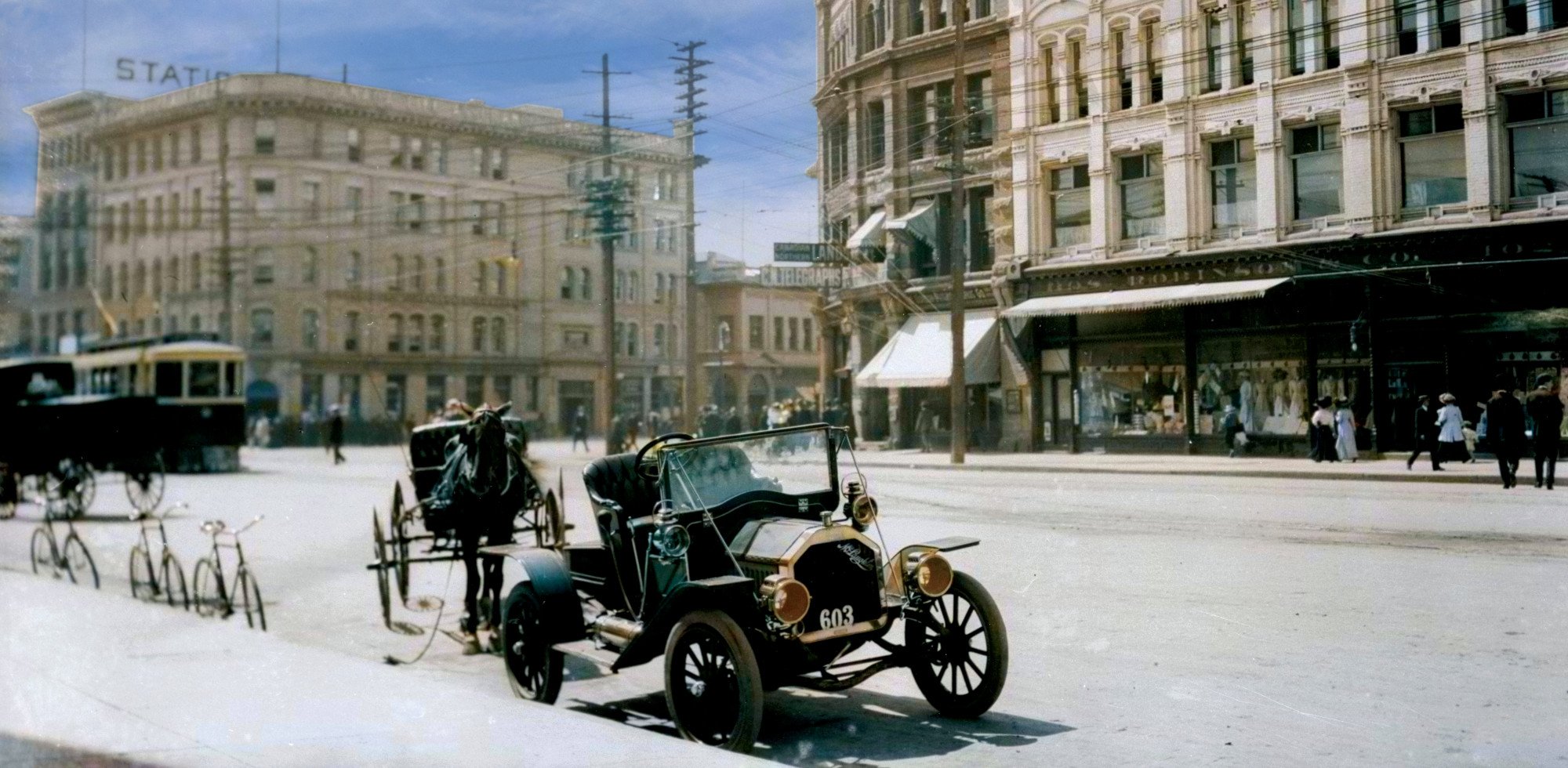
Exit the Horse
Exit the Horse: The Early Years of Canadian Motoring, 1851-1910
November 17, 2023 - october 31, 2024
Who drove the first Canadian car? Who built the first Canadian car? How did Canadians come to rely on cars and trucks to get around? Explore the dawn of the motor age, through stories, legends and exploits from communities across Canada.
The history of the motor car in Canada begins well before Confederation. Explore the exploits of Canada’s first automotive inventors and tinkerers, the birth of a Canadian auto industry, and the deep roots of motoring realities we take for granted today. From vigilante justice on the highways, to history’s first snowmobile, to the surprising connection between hockey sticks and steam cars, Exit the Horse is a journey through Canada’s forgotten motoring past.
The museum’s 1897 Fossmobile tribute is one of the highlights of Exit the Horse.
George Foote Foss and assistants with the partially-completed Fossmobile, circa 1897.
an era of inventors
At the dawn of the 20th century, no one knew what an automobile should look like, or whether gasoline power, steam, or electricity would come to dominate personal transportation. Inventors across Canada, often working in their own homes, produced fascinating one-off cars like the Fossmobile, the country’s first successful gasoline car, the Redpath Messenger, one of the earliest attempts at building a commercial Canadian car, or the unusual Galt, the first Canadian gas-electric hybrid.
Most of these inventors would fail in their efforts, but some would succeed beyond their wildest expectations, becoming part of the growing Canadian auto industry.
A calendar from the McLaughlin Carriage Company advertising Canadian-made carriages and automobiles.
An era of carriages and craftsmanship
At first, the country’s large industrial concerns, and especially its carriage factories, regarded automobiles as a threat to their business. Later, these same companies would apply their carriage-building expertise to some of the first cars sold nationwide. Many early cars were designed to look like “horseless carriages”, while others were literally repurposed carriages with motors attached. Some of these designs would be the foundations of industrial empires.
The Tudhope-McIntyre of Orillia was a light and flexible offroad vehicle aimed at farmers, for instance, while McLaughlin of Oshawa built luxurious Model F cars based on the American Buick. Many former employees of the carriage giants would spin their expertise off into car businesses of their own, including the well-designed Kennedy, built in Cambridge, Ontario.
The view between Pine Lake and Stink Lake, ON., circa 1910.
An era of automotive adventure
In the early days of motoring, every trip was a dangerous excursion into the unknown. Road signs were nonexistent, gas stations hadn’t been invented yet, and the rutted, muddy and winding roads of rural Canada made breakdowns a constant threat. Many successful early Canadian cars, or American cars used in Canada, made a name for themselves embarking on epic voyages across the Canadian landscape. The McKay, the second automobile built in Nova Scotia, drove from Halifax to Regina. The innovative American Cartercar climbed mountains to prove the power of its unusual “gearless” drive. In British Columbia, open-topped Orients were used for trips along the winding coastal trails of the Rocky Mountains.
Cars weren’t always popular on the road. In many communities, locals maintained their own roads, and had no interest in out-of-town cars causing property damage, frightening livestock, getting in accidents, or worse. Sabotage, extortion and literal highway robbery weren’t unknown. Many of the first motoring organizations, like the ancestor’s of today’s Canadian Automotive Association (CAA), were formed to help motorists survive the wild and unpredictable experience of Canadian driving.
Orlando Annibaldi in his Auto Wagon in Port Colborne, ON, date unknown.
An era of international competition
Canadian cars weren’t the only ones on the road, however. Though the motor car had been invented in Germany, and popularized in France, it truly succeeded in the United States. Soon, cars built by American companies, or their local subsidiaries, were everywhere on Canadian roads. Some, like Woods, and its pioneering electric cars, would soon fall by the wayside. Others, like the sturdy and infinitely flexible International Harvester Auto Wagon, were modest local successes. But a few American companies, chiefly Ford, which began manufacturing the Model T in Canada in 1909, would go on to change the face of Canadian roads, and Canadian transportation culture, forever.
A 1907 picture postcard of an auto meet in Kincardine, Ontario.
Share your stories and photos
Was an ancestor of yours an auto pioneer? Do you have old photographs of family vehicles from before the First World War? Share your family stories and photographs with the Canadian Automotive Museum to help us tell the story of the first cars in Canada. Stories and images can be emailed to ddepencier@canadianautomotivemuseum.com.
In particular we are looking for:
Images of Canadian-owned and operated motor vehicles from before 1910.
Family history about early car pioneers and driving stories.
Early motoring artifacts.
This exhibit was made possible with the support of the Department of Canadian Heritage’s Access to Heritage Program.

